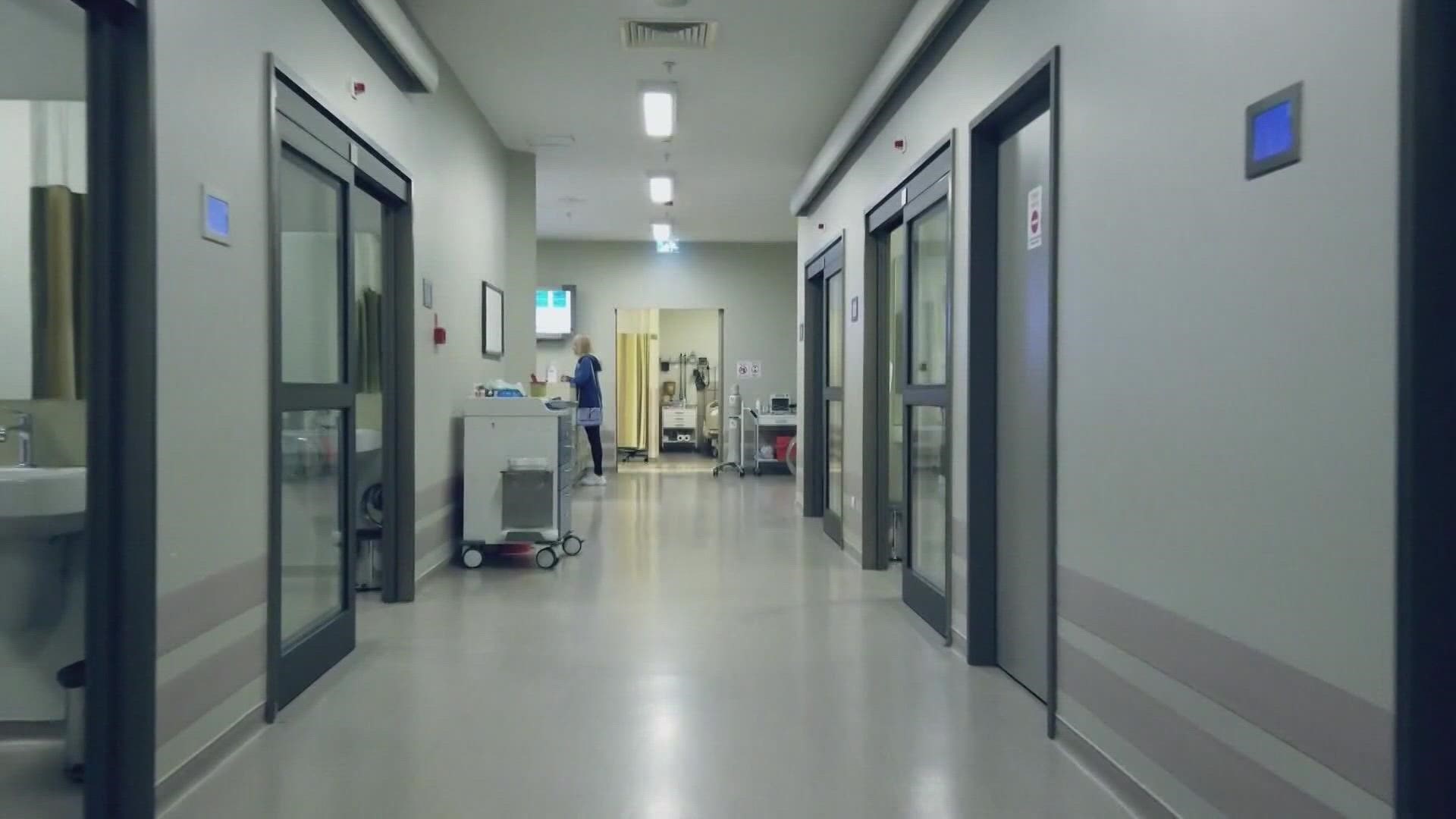SEATTLE — On average, Washington health care facilities are reporting an average of 800 to 850 new COVID-19 cases among staff per day.
The stat was shared during the Washington State Hospital Association’s (WSHA) Tuesday briefing along with word that despite a slowdown in western Washington case rates, the omicron wave is nowhere close to being finished with the state.
Plus, even with shortened quarantine periods for COVID positive staff, the high levels of virus among hospital workers is only stretching facilities even further.
In the last week, hospitals have had a daily average occupancy of 2,286 COVID-19 patients, which hit a high of 2,300 at one point.
“Last week was an extremely rough week for all those in our state who needed access to life-saving hospital care,” said WSHA Executive Vice President Taya Briley. “Hospitalizations were trending up, and staff continued to call out sick because they had either contracted COVID or they were having to isolate due to exposure.”
The state’s sixth wave in the pandemic is being further complicated by the uneven surge with eastern Washington experiencing an uptick in cases and hospitalizations as western Washington sees rates decrease.
In the last week, there’s been a 38% increase in COVID patients at Chelan County hospitals, a 31% increase in Yakima County, a 23% increase in Spokane County and about a 15% increase in Kitsap and Clark counties.
“We are concerned about the rising cases and hospitalizations in eastern Washington and Idaho and how they will work all across Washington state,” Briley said. “Hospitalization numbers are trending down in parts of western Washington in the past week, but overall hospitalization numbers in western Washington remained very high.”
Hospital leaders only expect these increases to further strain staff in hospitals to the east, more of which are more rural and smaller than facilities in western Washington.
Chief Nursing Officer at Pullman Regional Medical Center Jeannie Eylar said, “The shortage is real, and hospitals are trying every aspect that they can to recruit and retain all of their staff, nurses, lab techs, imaging techs. It takes that whole team, and it takes a lot of creativity and a lot of effort to make it the kind of work that people want to do.”
Additional measures by the state have been taken to relieve hospitals of some strain, including the help of 100 National Guard members in nonclinical settings.
“Some of the National Guard teams are on the ground and helping to provide relief and emergency departments that were especially hard hit, and the state is moving the assessments required for difficult to discharge patients forward at a faster pace,” Briley said, adding that at-home tests are also relieving some pressure since fewer people are going to emergency rooms looking to get tested for the virus.
WSHA is also calling on the state to increase funding to help future nurses get the required education in order to help alleviate the ongoing shortage.
Briley said the state’s health facilities are currently reporting that they need about 6,000 more nurses. However, during the 2019-2020 school year, the state only produced roughly 2,600 new nurses, some of whom left the state.

